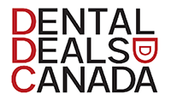Canada Dental Benefit: Affordable Dental Care for Eligible Families
Canada's healthcare system is celebrated for its inclusivity, yet dental care has remained a notable gap in the coverage. A substantial portion of the population lacks dental insurance, making access to oral health services challenging. To bridge this gap, the Government of Canada introduced the Canada Dental Benefit, an interim measure aimed at providing essential dental care to eligible families, particularly children under 12, who do not have access to private dental insurance.
The Canada Dental Benefit: A Lifeline for Families
The Canada Dental Benefit targets families with an annual income of less than $90,000 who find themselves without dental insurance. It's designed to alleviate the financial burden of dental care for children under 12 years old. Here's what you need to know:
- Eligibility Check: Before applying, ensure that your child's dental costs are not fully covered by another government program.
- Benefit Amounts: Depending on your adjusted family net income, you may receive a tax-free payment of $260, $390, or $650 for each eligible child.
- Multiple Payments: Families can apply for a maximum of two payments per child.
- Application Deadline: Applications for dental care received between July 1, 2023, and June 30, 2024, are open until June 30, 2024.
Who Can Apply: Meeting the Criteria
Eligibility is essential for accessing the Canada Dental Benefit. Here are the criteria to consider:
- Child's Age: You must have a child or children under 12 as of July 1, 2023.
- Canada Child Benefit (CCB): Ensure you are currently receiving the Canada Child Benefit (CCB) for that child.
- Income Threshold: Your adjusted family net income should be below $90,000.
- Lack of Private Coverage: Your child should not have access to private dental care coverage.
- Tax Return: File your 2022 tax return.
- Out-of-Pocket Expenses: Have incurred out-of-pocket expenses for your child's dental care services in Canada between July 1, 2023, and June 30, 2024, which haven't been fully covered by other government programs.
How to Apply: Simple Steps
The application process for the Canada Dental Benefit is straightforward. Here's what you need to do:
- Canada Revenue Agency (CRA) My Account: Eligible parents can apply quickly and easily through their CRA My Account.
- Direct Deposit: For faster processing, sign up for direct deposit to receive your payment within five business days.
The Second Benefit Period: Expanding Access
The second benefit period of the Canada Dental Benefit was set to open on July 1, 2023, further extending support to eligible families. With direct payments of up to $650 per eligible child, this initiative aims to enhance access to dental care services received between July 1, 2023, and June 30, 2024.
A Step Towards Health Equity
Proper dental care is fundamental to overall health and well-being. The Canada Dental Benefit strives to make dental care more accessible, particularly for vulnerable populations. By removing barriers to dental care, Canada is taking a step towards ensuring that no one has to choose between their dental health and other essential needs.
Conclusion: Promoting Dental Health for All
The Canada Dental Benefit is a testament to Canada's commitment to improving access to dental care services. It addresses a pressing need for affordable oral healthcare, especially among children. As we move forward, this initiative promises to create healthier smiles and brighter futures for countless families across the country.
For more information and to apply, visit the Canada Revenue Agency's website.
In Canada, dental care options can vary significantly depending on your specific circumstances, including your location, employment, and insurance coverage. Here are some key aspects of dental care options in Canada:
1. Public Health Coverage:
In Canada, dental care is not included in the publicly funded healthcare system, which covers doctor visits and hospital care. However, some public health programs provide dental services for specific groups, such as:
- Children: In many provinces and territories, dental care for children up to a certain age is covered under government-funded programs. The specific age and services covered vary by jurisdiction.
- Indigenous Peoples: The federal government provides dental care coverage for eligible First Nations and Inuit Peoples through the Non-Insured Health Benefits (NIHB) program.
2. Employment-Based Dental Insurance:
Many Canadians access dental care through employment-based dental insurance plans. These plans are typically offered by employers as part of their employee benefits package. The coverage can vary widely, from basic preventive care (e.g., cleanings and check-ups) to more comprehensive services (e.g., fillings, extractions, and orthodontics).
3. Private Dental Insurance:
Individuals and families who do not have access to employer-sponsored dental insurance may purchase private dental insurance plans. These plans come in various forms, including HMOs (Health Maintenance Organizations) and PPOs (Preferred Provider Organizations). Private insurance can help cover a portion of dental costs, but the coverage and costs can vary widely.
4. Government Assistance Programs:
Some provinces and territories offer financial assistance or subsidies for low-income individuals and families to access dental care. Eligibility criteria and coverage levels vary by region.
5. Dental Schools and Clinics:
Dental schools and public dental clinics in Canada often provide reduced-cost dental care. Dental students, under the supervision of experienced professionals, perform treatments. While these options can be more affordable, waiting times may be longer.
6. Out-of-Pocket Payment:
For those without insurance or coverage, paying for dental care out of pocket is an option. It's essential to budget for routine dental check-ups and be prepared for unexpected dental expenses.
7. Emergency Dental Care:
In case of dental emergencies, such as severe tooth pain, infections, or injuries, you can seek care at an emergency dental clinic or a hospital. These services are generally available to address urgent dental issues.
8. Community Health Centers:
Some community health centers and non-profit organizations may offer dental care services at reduced costs or on a sliding fee scale based on income.
Photo by S&B Vonlanthen on Unsplash

